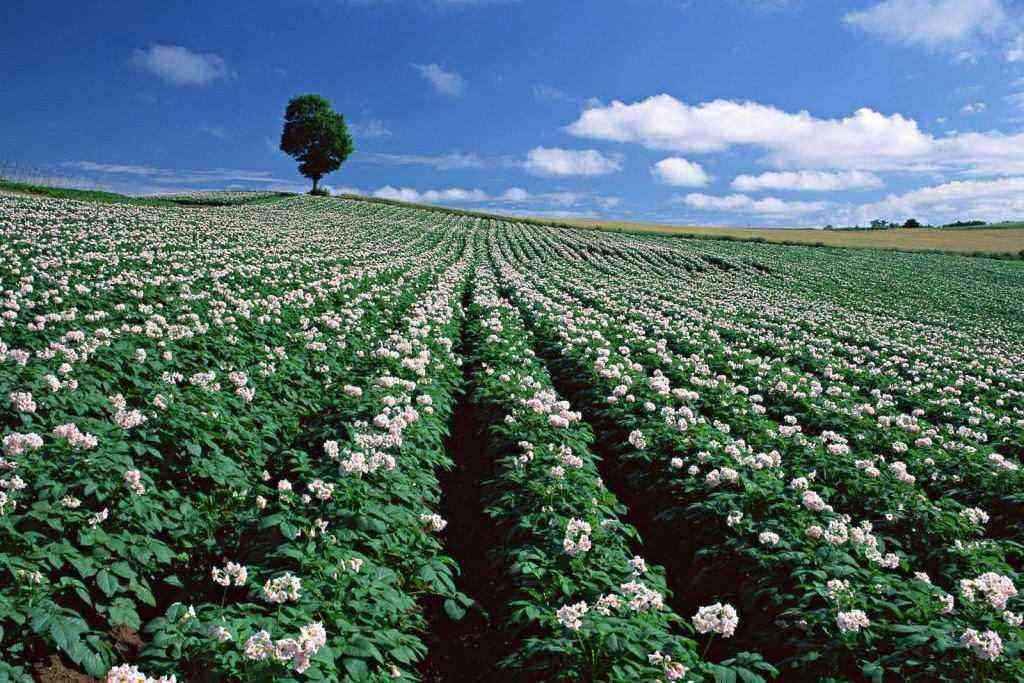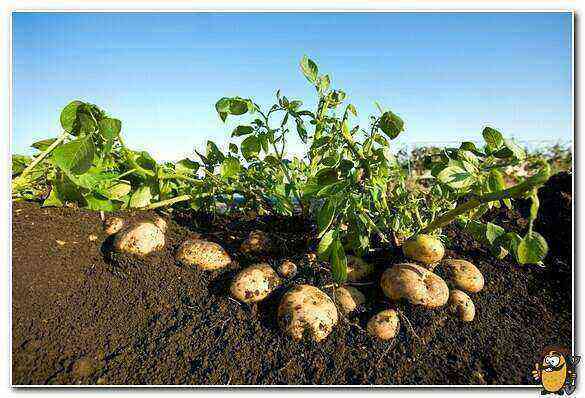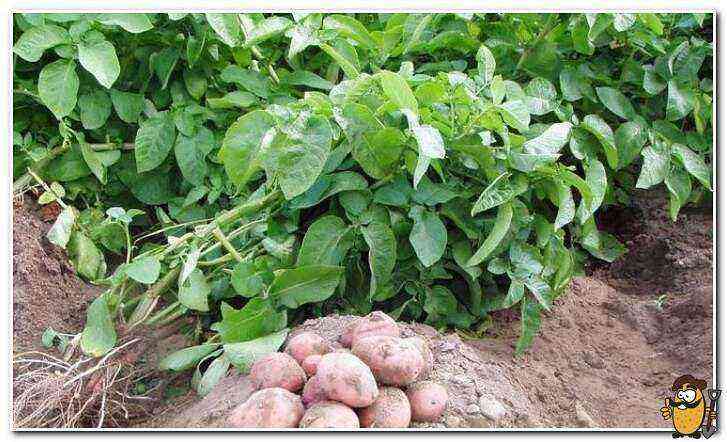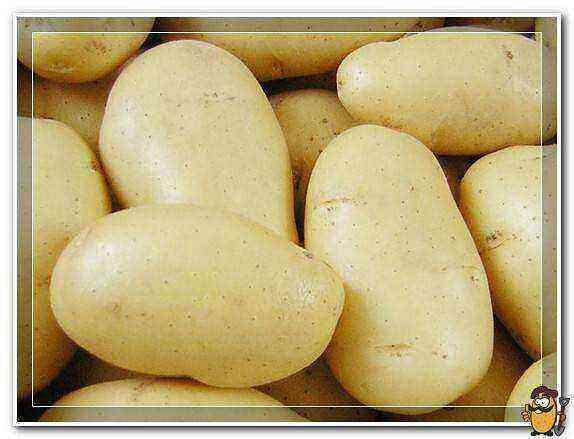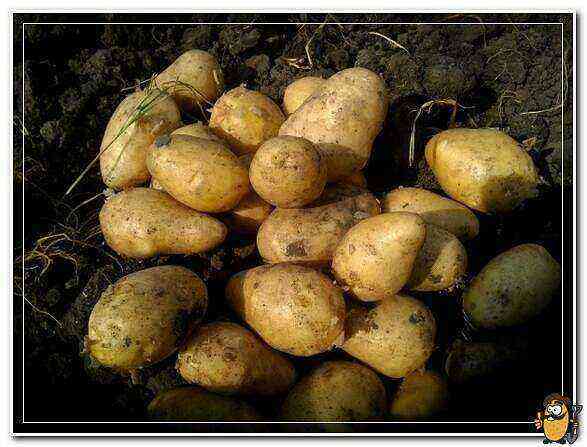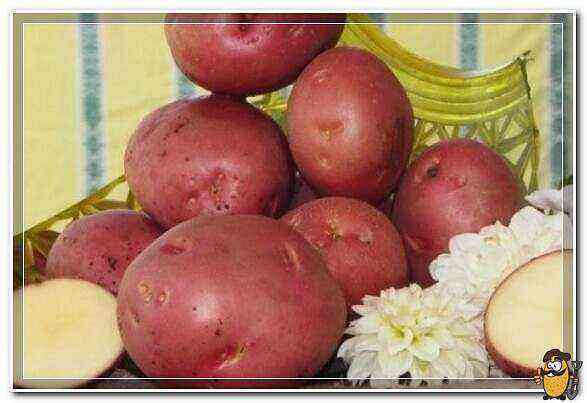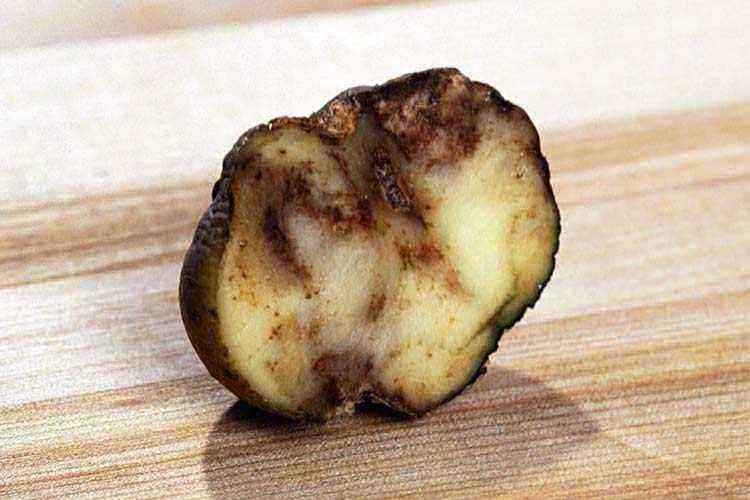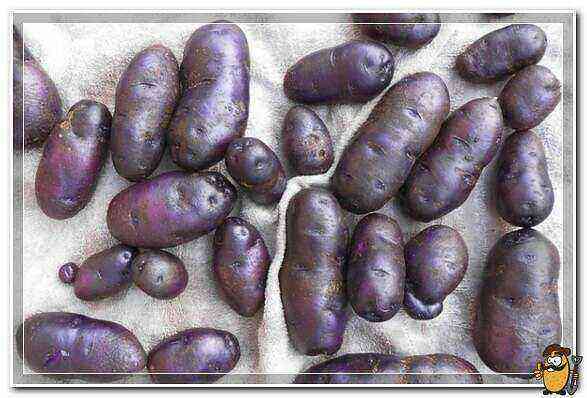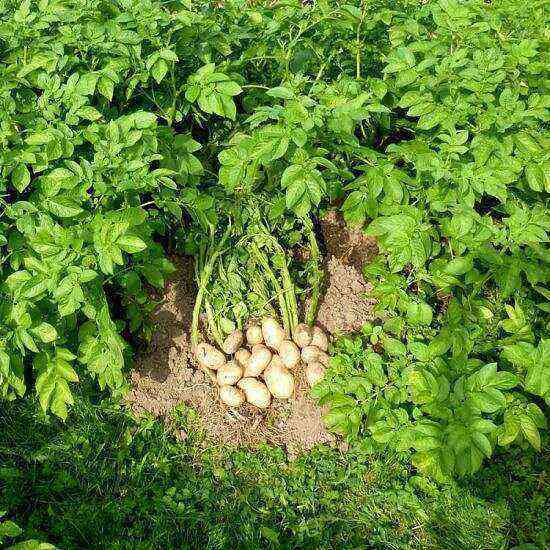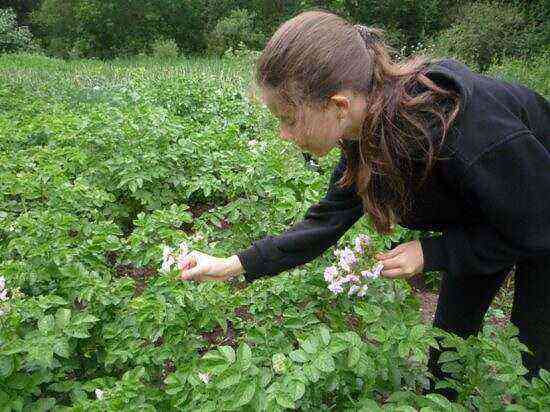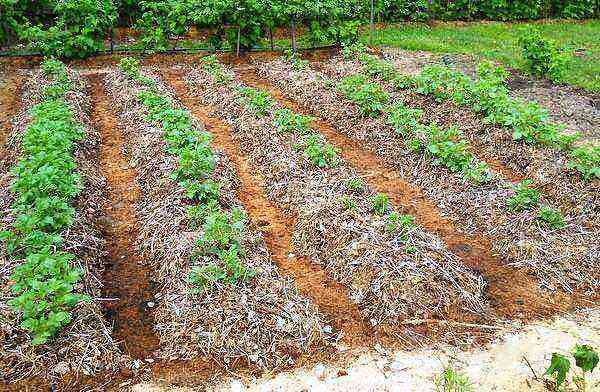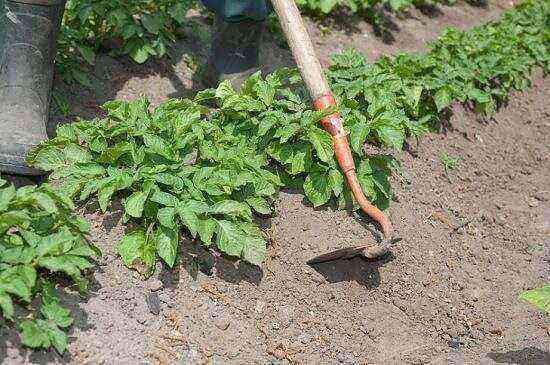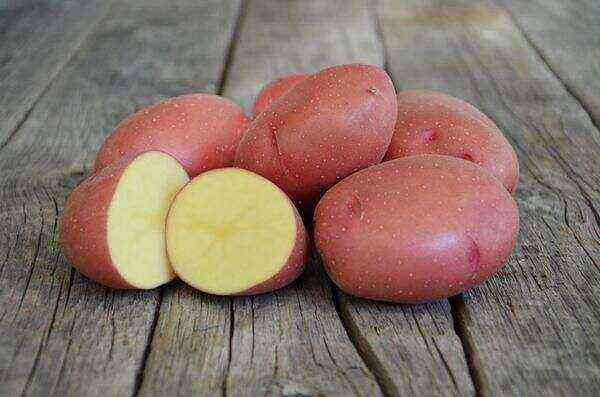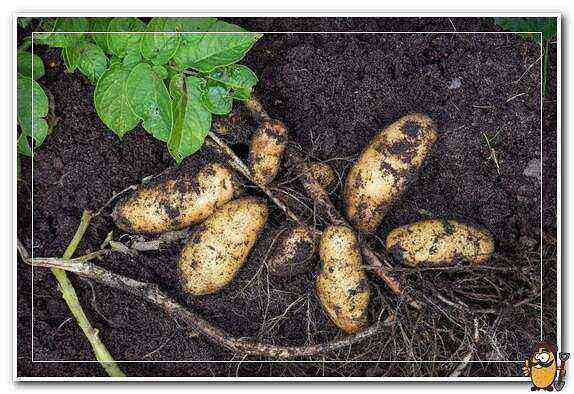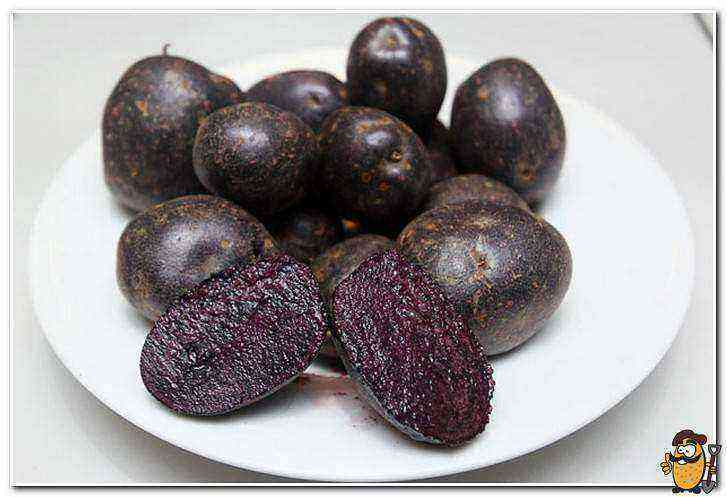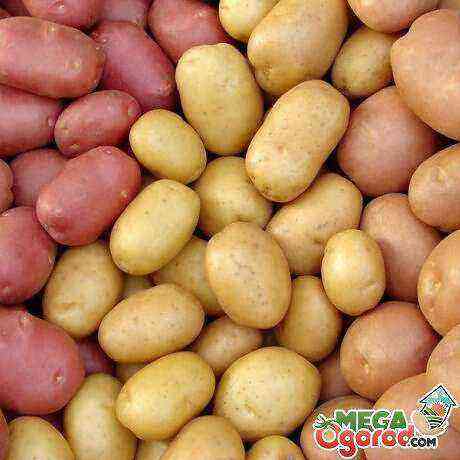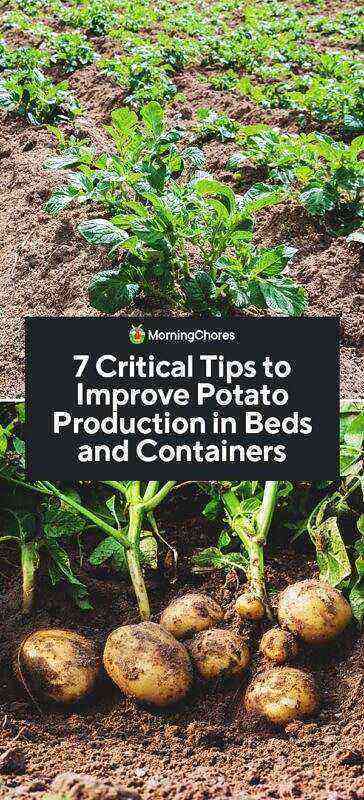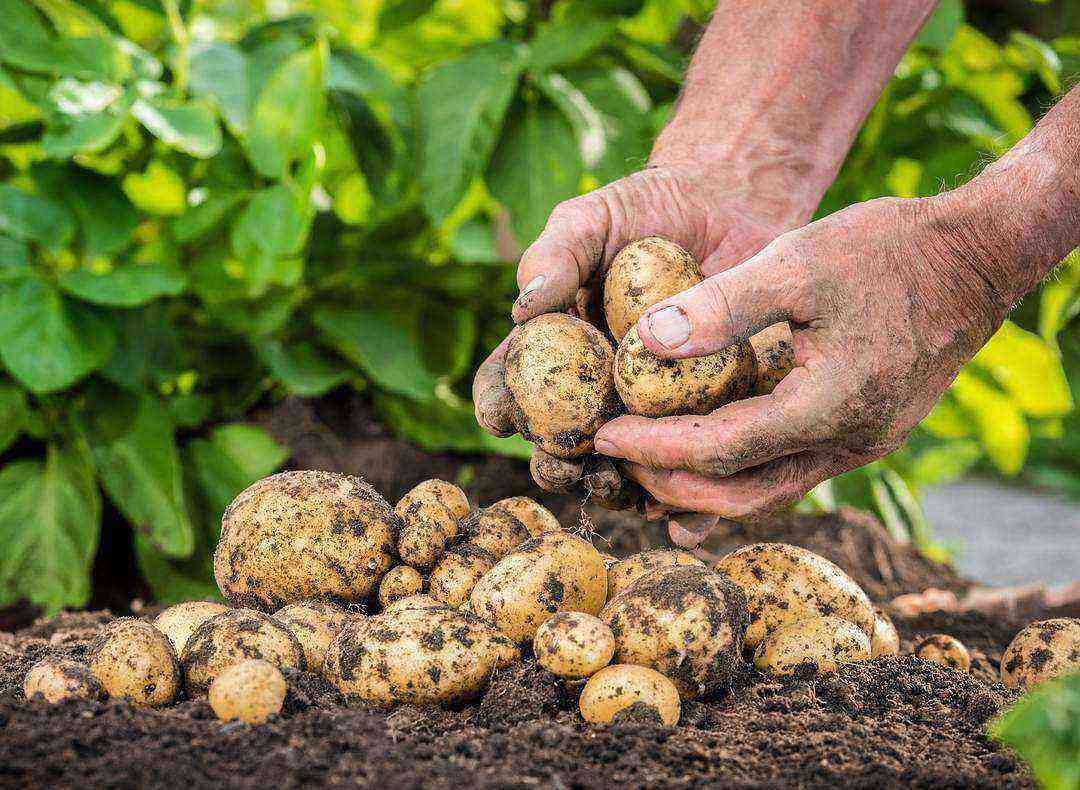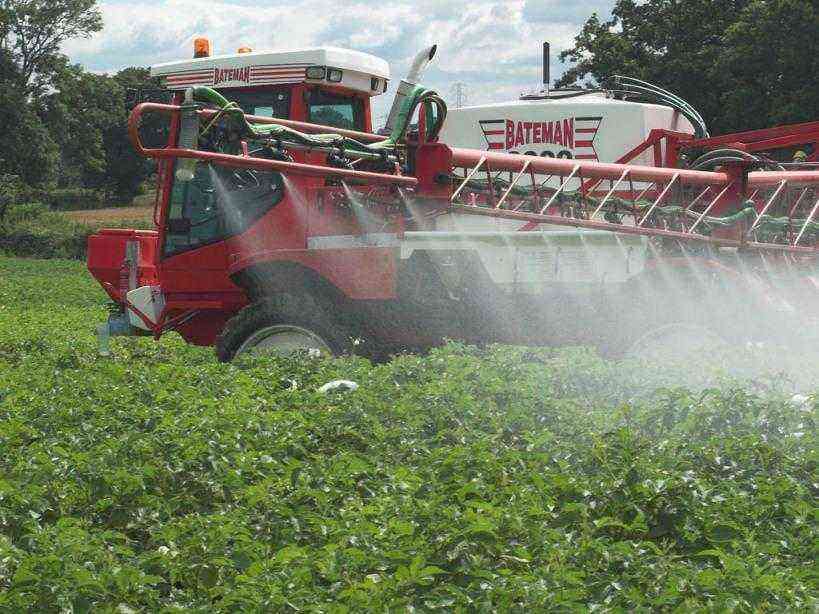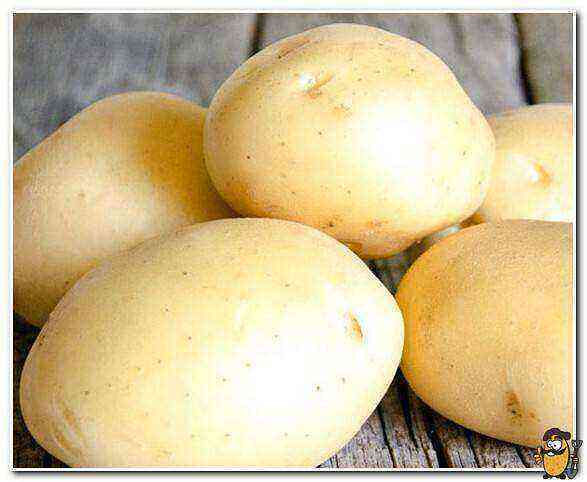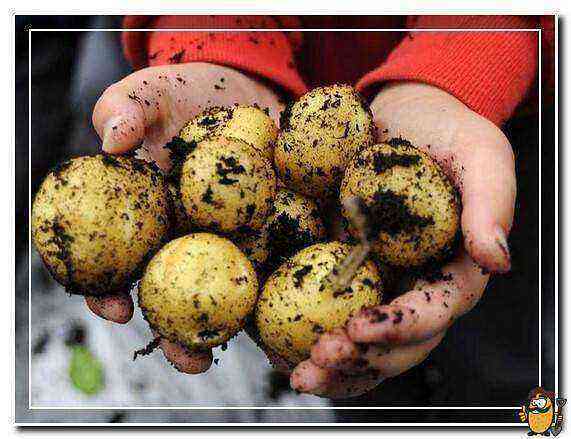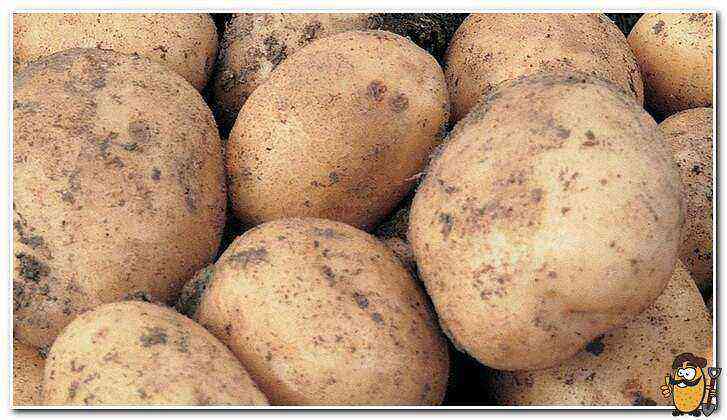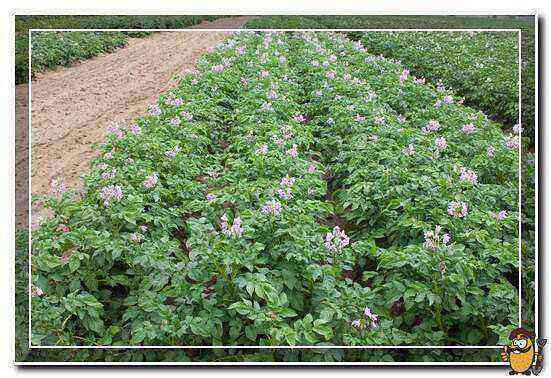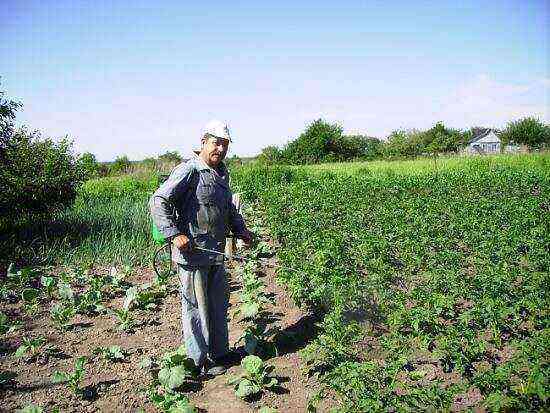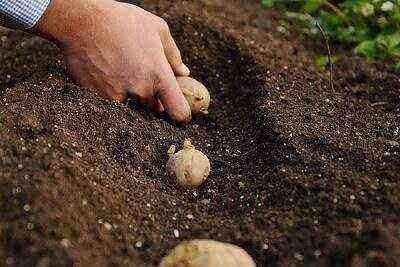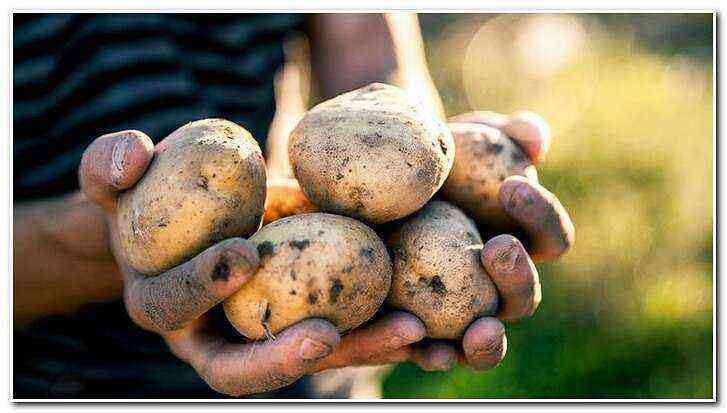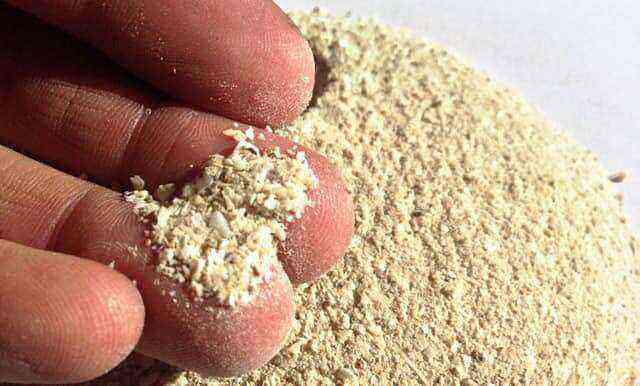Fertilizing potatoes when planting – what and when is it better to fertilize potatoes?
Fertilizing potatoes – first steps
Similar articles
- Potato growers who grow the second bread on small sandy, sandy loam and other infertile soils, feed his plantings three times during the growing season.
- So, the most important thing is not to overdo it with fertilizers – if you use them in excess when planting, then the crop will be frail, the potatoes are tasteless and poorly boiled, and only the tops will be powerful. Be especially careful with potassium – yes, potatoes especially love it, but there is usually plenty of this substance in the soil. Therefore, it must be introduced strictly according to the norm – only in this way will it contribute to a better assimilation of phosphorus and nitrogen. But if you do not use the latter, then this will not affect the potato crop in the best way.
As for mineral fertilizers, potatoes need more potassium and less nitrogen. Wood ash will completely provide the tubers with the first element, but in the store it is better to purchase nitrogen fertilizers – urea, which is also called urea. It is nitrogen that will then give the greatest increase in yield. It is only important to observe the dose – with the right approach, the bush will turn out to be powerful and a large number of fairly large tubers.
Potatoes as a culture differ from others in that they consume nutrients very, very intensively. All due to the fact that he has a poorly developed root system, and the tubers grow very voluminous. And in the fall, after harvesting potatoes, we take out a certain amount of nutrients from the soil. It is important to return all this in the form of fertilizers already during the next planting – otherwise each next harvest will disappoint more and more.– on loamy, sandy, sandy loam soil, potatoes need nitrogen;Top dressing is performed when the tops reach a height of 12 cm. At the same time, the liquid mixture is very good because it can be applied directly under the root system without unnecessary damage to it. Do not forget that getting the solution on the tops is highly undesirable. Usually organic feeding is done at the first hilling. After about 3 weeks, the plants are gaining a high growth rate and re-hilling is required. At the same time, it is very good to add a solution of mineral fertilizers to the soil. It can be a mixture of potassium, phosphorus and nitrogen supplements, which will be needed for the growth of large and tasty tubers.
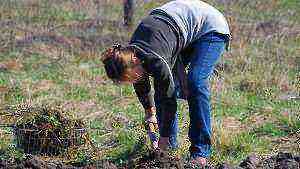
Not only a high yield, but also resistance to diseases, as well as nutritional taste and appearance of tubers – all this is directly related to the nutrition of the plant, so the question “how to fertilize potatoes when planting” is very important. An example can be given: if the plant has not received additional feeding, the protein content in it does not exceed 1%, and with the optimal introduction of microelements it reaches 2%. Each ton of grown tubers removes 5 kg of nitrogen, 8 kg of potassium and 2 kg of phosphorus from the soil.
Fertilizing when planting – the main stages
If it was not possible to organize drip irrigation, a leaf or foliar feeding system will help you out. In this case, the fertilizer reaches the roots a little less.
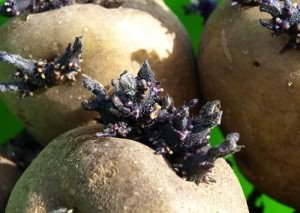
This is done in three steps:Otherwise, problems with fungus and potato diseases cannot be avoided. Fertilizing potatoes with manure should be carried out carefully and in dosage. Overdoing it, you can get the opposite result – low yields and increased levels of nitrates.Competent gardeners prepare the land for spring planting of potatoes in the fall. For this purpose, the soil is dug up. Large clods of earth are not broken, but left as large as possible. Under the influence of air and various climatic conditions, the blocks will be crushed on their own. Thus, the soil becomes loose, enriched with oxygen and other useful elements.
The first time is in the germination phase, if they are poorly developed and have pale greenish leaves. For this purpose, 10 tbsp is diluted in 1 liters of water. spoon of dry bird droppings and consume 0,5 liters of fertilizer solution for each bush.
- Why do most gardeners put fertilizers in the hole? This is because the roots of potatoes never penetrate deeply – they develop only in the surface layer of the soil. Of course, in this case, the feeding area is limited by a small space, but, on the other hand, fertilizers are consumed a little and they immediately get to their destination. But you cannot fill the holes with fresh manure – the potatoes will simply “burn out”. It can be used when planting potatoes only in the form of humus, but at the same time, keep in mind that the risk of getting scab increases by 2 times. If you nevertheless decide, then close it up in the grooves and holes on the same day as you plant the culture.
- Nitrogen fertilizers are taken most often in the form of ammonium sulfate or ammonium nitrate, and phosphoric fertilizers – in the form of ammophos, double or ammonized superphosphate, potassium in the form of potassium chloride or potassium salt. But you need to be careful with nitrogen: they are needed most of all during the growing season, but if you overdo it with a dose, then all the energy will go to green leaves, and not root crops. The tops will be huge, like a sunflower, and the harvest will be quite modest. You can notice this from those neighbors who boast about “potato bushes to their belly” all summer long, talk about some new fertilizers, and then in the fall they are somehow quietly and sadly collecting an unexpectedly weak crop. “Tops, not roots”, as they say in the famous fairy tale.
- Here are the exact calculations of agronomists, exactly how much potatoes need in order to give a full harvest: 4 kg of tubers from one square meter are taken from the ground up to 20 g of nitrogen, up to 45 g of potassium oxide, up to 6 g of magnesium and up to 10 g of phosphoric acid + some copper, zinc, manganese and boron. And it will not work to fill up all this in such an amount at one time – at different times of ripening this culture needs different feeding. That is why potatoes are always fertilized in two stages: when planting in holes and under autumn plowing. Please note that early maturing varieties are most demanding on nutrition, and they have their own rates for fertilizing when planting.

– on chernozem in phosphorus;
Top dressing types after planting
This is a concentrated product that ensures the rapid growth of potatoes, but you cannot use it in its pure form – you will burn the roots of the plants. To prepare the litter for use, it is diluted with water in a ratio of 1:15 and insisted in a warm place for several days. After that, the liquid is used to water the plants. It is necessary to adhere to the norm: one liter of solution for each bush.

Based on this, it is not difficult to understand how to fertilize potatoes when planting in a hole. It is very responsive to organic fertilizers like manure and compost. Organic matter is able to increase productivity several times. There is reliable information that gardeners, who regularly apply manure to the soil, began to collect 10 buckets from each planted one. For comparison: without feeding, this figure usually corresponds to three buckets collected from one planted. In addition, mineral fertilizing, green manure, chicken droppings and ash are used.
It is very simple to carry out such a procedure – superphosphate and chicken droppings are diluted in water, the water is filtered and then the bushes are sprayed with this solution.

Immediately after germination;
How to fertilize potatoes when planting in a hole?
The most valuable type of organic fertilizer is poultry manure. It can be purchased at specialty stores, or taken from the poultry house. The application of organic fertilizers to the soil ensures effective plant nutrition. Potatoes will receive such essential substances as phosphorus, nitrogen, potassium, magnesium, etc. Also, due to special chemical processes that occur when organic fertilizers are introduced into the soil, beneficial microorganisms develop. They will reliably protect root crops from fungi.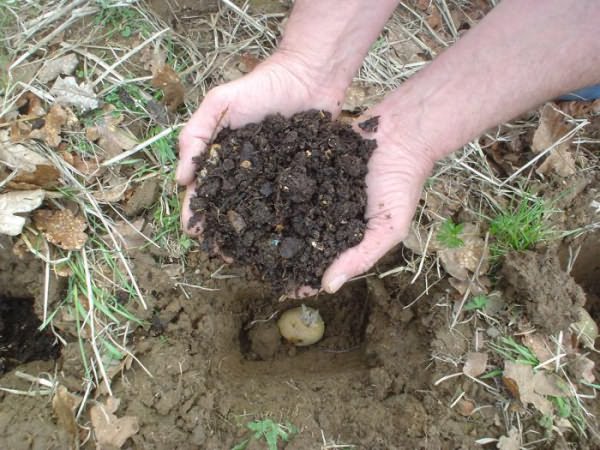
What affects the yield
How to prepare potatoes for planting
Characteristics
In the absence of slurry and mineral fertilizers Apply a green solution. About 10 kg of finely cut nettles are poured into a 10-liter barrel, filled with water and left for 5-6 days. Then stir again and pour 1 liter of solution under each bush. Together with the nettle, a bucket of humus can also be poured into the barrel, then the solution will be more nutritious.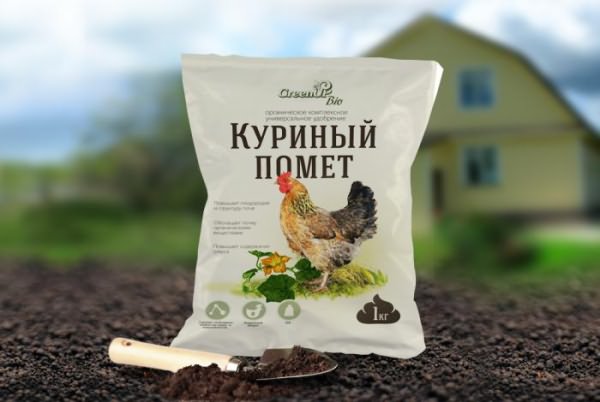
Required fertilizers
Pay attention to such an important point: all fertilizers are applied according to their dose and method. So, ammonium nitrate and urea are used per kilogram for each hundred square meters before planting, and nitrophoska and nitroammofosk, respectively, 5 kg and 3 kg per hundred square meters are brought under the spring digging before preparing the holes. You need to apply mineral fertilizers directly into the hole; when planting potatoes, this is the most economical and rational way. Here it is necessary to spend 6 g of urea per square meter or 9 g of ammonium nitrate. If you plant potatoes on light sandy soils, be sure to first sprinkle magnesium in the form of magnesium sulfate, 80 g for each 1 m2, or dolomite flour already 20 g.
Wood ash is especially valuable for potatoes. It should be brought in from 5 to 10 kg per hundred square meters. It contains a lot of phosphorus, calcium and potassium, as well as special valuable microelements, the assimilation of which is simply necessary for the full development of tubers.
Spring feeding
You can compare two crops of potatoes – with and without fertilization when planted. The difference may surprise you a lot! So, only with rotted manure from one planted bucket, many managed to remove 10 buckets of fresh potatoes. And all this – in those areas where it was never possible to take more than three buckets!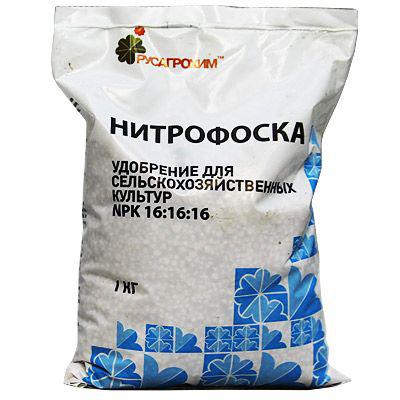
Autumn soil preparation
– on drained peatlands and river floodplains in potassium.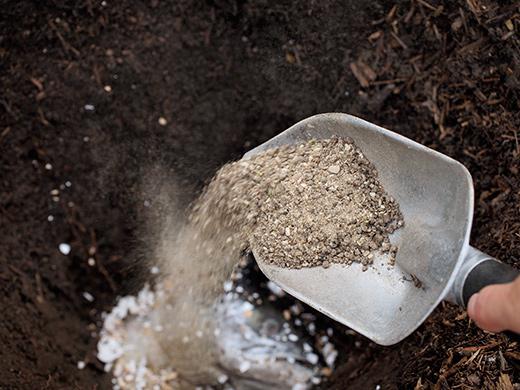
Mineral dressing and green manure
All these fertilizers can be used at your summer cottage. They are affordable enough and do not require special knowledge to be successfully applied on the garden plot.
If feeding is not done on time
Let’s take a look at how to fertilize potatoes most effectively when planting. In the spring, mineral fertilizers are optimal. However, the proportions must be observed very carefully so as not to harm the plants. So, in the spring, potassium sulfate is introduced at the rate of 2 kg per hundred square meters, double superphosphate – 1 kg per hundred square meters. Ammonium nitrate can be added just before planting. In addition, summer residents actively use ash – 5 kg per hundred square meters. Now you can imagine how to fertilize potatoes when planting. Saltpeter and other mineral additives are also included in complex fertilizers, which are much more convenient to apply. This is “Nitrofoska” – consumption of 5 kg per one hundred square meters, that is, for one hole you will need a heaped teaspoon.
Foliar dressing is carried out early in the morning or in the evening in dry weather. It is important to monitor the weather conditions, otherwise the bush may burn out. You should also remember about the correct dosage. All fertilizers must be applied in a controlled manner. An excess of fertilizer negatively affects the quality of the crop. It is better to underfeed than overfeed.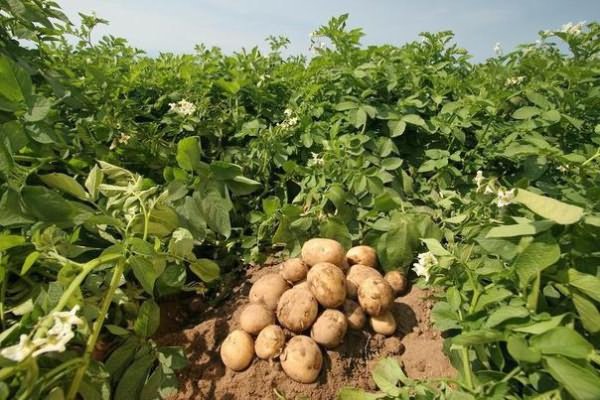
Chicken droppings
During the ovary on the tops;
It is impossible to apply all the necessary fertilizers at one time. Potatoes ripen in several stages, each of which requires a certain amount of certain nutrients. Therefore, it is important to understand fertilizers and know when and what is the best way to feed the plant. In addition to preparing the soil, tubers are prepared before planting. They are warmed up and germinated. It will also not be superfluous to sprinkle the tubers with wood ash.
How to fertilize potatoes?
Potatoes planting and care
How to fertilize potatoes?
The plants are fed the second time during budding. In 10 liters, 2-3 tbsp are bred. spoons of wood ash. This dressing accelerates the flowering of potatoes.
If you place the fertilizers just along the ridge, and they end up in the upper part of it, in the fall you will find potato tubers practically on the ground, also green. This is due to the fact that with any lack of irrigation or problematic soil structure, all valuable trace elements will remain shallow, and the roots, as you know, stretch to where they are fed. And there the first potatoes will be tied. That is why today most gardeners use special planters for planting potatoes, which are equipped with a fertilizer application. It is quick and convenient, and, most importantly, the root system develops correctly and at the right depth.
The rate of application of mineral and organic fertilizers during planting of potatoes for different areas is different – here a lot depends on the fertility of the soil. Calculate everything based on such data (all this is per one hundred square meters):
It is worth considering the type of soil on which the potatoes will grow, as follows:
So which fertilizer is best for potatoes? To begin with, this culture loves complex feeding, in which different nutrients are immediately combined – nitroammofosk and azofosk. But it is better to use superphosphate separately. You can also find special fertilizers – like Kemiru Potato, for example, in which the most necessary elements are really optimally combined. True, such a composition will cost quite a lot.
Early potatoes consume all nutrients more intensively, therefore they need more feeding than late ones.
Potato is a product that is important for the diet of people and which is grown by many, both for themselves, for food, and for sale. On the one hand, potatoes are easy to grow, on the other hand, they require care and good, competent feeding. Given the fact that potatoes are usually planted in the same place for several years in a row, their quality and yield decrease, therefore potato fertilization is an important part of the work and this is very important for private traders.
Today we are talking about how you can fertilize potatoes when planting. However, it is very important to prepare the soil in advance so that the spring is full of nutrients. In the fall, rotted manure or compost is introduced. In the spring, this greatly saves the gardener’s time, since you no longer need to think about how to fertilize the potato when planting, it is enough to plant it in the ground and then feed it with mineral mixtures. There is one more advantage: organic matter introduced before winter has time to overheat well, and in spring to be saturated with melt water, in order to give all the nutrients to future plants to the maximum. Someone prepares wells in advance and puts manure in each of them (about 2 handfuls), but most often it is simply scattered over the site at the rate of 10 kg per one hundred square meters.
A good harvest pleases the gardener, but in the process of their growth, the plants draw out a huge amount of useful microelements from the soil. In order for autumn to continue to delight you with a rich collection of vegetables, you need to collect information in advance on how to fertilize potatoes when planting. Gardeners use schemes that have been worked out over the years, why don’t you apply their experience in your garden too?
When flowering.
Next comes the next stage – feeding the potatoes during planting. Often, fertilizer is dosed into the hole along with the tuber. This method is the most efficient and economical.
Why fertilize potatoes at all?
We recommend that you familiarize yourself
The third feeding is carried out during the flowering of potatoes (to accelerate tuberization). Dissolve 10 glass of chicken manure in 1 liters of water and add 0,5 liters of solution under each bush.
To summarize: if potatoes are fertilized correctly when planting, they will give an excellent harvest: large, with excellent culinary qualities and optimal shelf life. And even the next year, such tubers will give much more “offspring” than those that grew not fertilized before. Then to the point!
Choosing the right type of fertilizer
Fertile soils – 2-2,5 kg of compost and manure, 2-2,5 kg of superphosphate and up to 1,5 kg of potash fertilizers.
That is why organic is the best fertilizer for potatoes, because it contains all the necessary nutrients (sulfur, calcium, potassium, magnesium, phosphorus and nitrogen) and trace elements (molybdenum, cobalt, manganese and boron). This is a direct source of nutrition, which makes the compounds inaccessible to the roots, the most easily digestible, and thus humus accumulates in the soil and its physical properties are significantly improved. Even on saline soils, organic matter weakens the effect of toxic salts on the development of a potato bush. And most importantly, during decomposition in the surface layer of air, the amount of carbon dioxide increases significantly, which makes potato tubers grow large and healthy.
The best option when both types of fertilizers are used: organic and mineral.
Now you can find all kinds of fertilizers that are sold in all specialized stores. But the most popular remedy is animal waste – manure. There are two ways to use this fertilizer: local and widespread. Local – this is the placement of manure directly into the hole or furrows, where the tuber will then be placed. Spreading method is when manure is spread evenly over the entire plot and then covered up.
Spring is hotter time, so mineral fertilizers can be added in advance. To do this, take potassium sulfate (2 kg per hundred square meters) and double superphosphate (1 kg per hundred square meters). Very well increases soil fertility and increases the productivity of sowing winter vetch. This green fertilizer accumulates nitrogen and other essential trace elements in the sprouts. There are also more famous green manures that can be used in the spring. These are clover and peas, lupine and sainfoin. They promote the growth of nodule bacteria that produce nitrogen. At the same time, the method of using this fertilizer is very simple: before planting potatoes, it is simply plowed into the soil.
First of all, you need to choose a good variety, decide on the planting material. Despite the high-quality agricultural technology, when choosing bad seeds, you should not expect a good harvest. The weather conditions during the growing season are also an important factor. The crop will be affected by both lack of watering and too much moisture. An important factor is the correct cultivation technique. That is, timely hilling and weeding. All this affects the quality of the crop. But still one of the main questions is “how to fertilize potatoes when planting”. For the formation of a tuber, it is important that the soil has a sufficient amount of nutrients. That is, the timely application of the necessary fertilizers guarantees an increase in the yield.
This is the last and most important top dressing. After the potatoes have faded, fertilizers are no longer applied.
Fertilizers such as nitrophoska and wood ash are an excellent storehouse of beneficial elements for the plant.
- It would be good to spread manure on top of the dug up soil. Potatoes on manure or peat compost grow tasty and large. In the fall, it is not necessary to add only rotted manure, since it will have time to overheat during the winter.
- Of organic fertilizers, humus is most suitable for feeding – two handfuls for each bush. Fertilizers are scattered in the aisles at a distance of 5-6 cm from the stems, and then embedded in the soil with a hoe.
On average fertile soil – up to 3 kg of manure / compost, up to 3 kg of nitrogen fertilizers, 2,5 kg of potash and 3-4 kg of phosphorus.
Fertilization technology
You can also use poultry manure, slurry, humus, a wide variety of composts and industrial waste as organic fertilizers when planting potatoes. But remember that manure and its composition depend on the type of animal and feed, although on average, in a semi-rotten state, about 5 kg of nitrogen, 6 kg of potassium oxide, 3,5 kg of calcium, 1,3 magnesium and 2 kg of phosphoric acid will be obtained from one ton … And before planting potatoes, you need to make ten hundredths of a hectare, two tons each.
Potatoes took root in Europe not very long ago, as it might seem at first glance – they were brought to Spain from South America only in 1565. And he came to Russia with the light hand of the restless Peter I. Moreover, at first, the peasants began to actively eat flowers, not a root crop, and were poisoned en masse, calling the imported culture a “damn apple” and even raising uprisings on this occasion. And when they explained to the negligent people how they still use this hearty vegetable in food, the potato quickly took root in Russia. And he pleased with an excellent harvest and a variety of dishes, until the life of the peasants after some time was spoiled by the second “American guest” – the vicious Colorado potato beetle.
When there is no manure or little use of it, composts consisting of plant residues, household waste, ponds (silt, sapropel) or chicken droppings, but you need to be extremely careful with the latter, exceeding it leads to a decrease in potato yield and loss of its taste.
Don’t despair if you didn’t know the best way to fertilize your potatoes when planting. Can still be fixed. If feeding has not been done in the fall and spring, then the plants must be maintained in the course of their growth and development. The best way to do this is to use a mullein. If you take fresh, then you need to dilute it with water 1:10, stale and rotted can be diluted in a smaller proportion – 1: 8. For top dressing, slurry is used, diluted in a ratio of 1: 4 with clean water.
WHAT TO FEED THE POTATO.
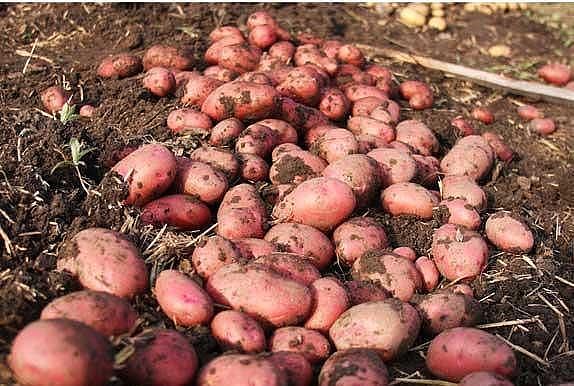
One more digression, before moving on to the most important thing (how to fertilize potatoes when planting). The root system of this culture practically does not penetrate deep into the soil, it is all distributed over the surface. This is what determines the need to apply fertilizers regularly in sufficient quantities. On the one hand, this is a disadvantage, since it severely limits the plant in terms of nutritional area. On the other hand, you can apply fertilizer directly to the root development center and avoid unnecessary feeding costs.
There are two fertilization systems – root and foliar. Root dressing is an effective but time consuming method. Fertilizers applied in this way reach the roots faster and the result from such feeding is much better. Each bush must be watered at the root with an aqueous solution of fertilizers, but it is much easier to do this if a drip irrigation system is organized on the site – in order to deliver nutrients to the plants, you only need to dilute them in the main container with water, and the minerals will be sent through the hose system address.
And bone meal can not only increase yields, but also improve the quality of potatoes. Do not forget about fertilizing after planting.
But in the spring, the introduction of fresh manure into the soil is taboo.
On a very small garden bed, potato bushes with erect stems can be fed with slurry diluted in a ratio of 1: 5, spending 1,5-2 liters of this solution per bush, avoiding liquid getting on the leaves. Top dressing is carried out only after watering or rain.
On problematic, depleted soil – 1 quintal of humus with 1 kg of ammonium nitrate + 3 kg of superphosphate.
Chicken manure is distinguished by its concentration and the fastest effect on the development of potato tubers – but it is also not used fresh, otherwise the plants can simply be burned. Dilute chicken manure with water in a ratio of 1:15 and leave for a couple of days in a warm place. Use one liter for each bush. But the siderates, tk. green fertilizers will enrich the garden with organic matter even better than manure.
To date, the most viable and fertile in the Russian regions are the following varieties: Bezhitsky, Lira, Zhukovsky early, Timo, Cardinal and Desnitsa.
The owner himself decides how to fertilize the potatoes, but in the absence of the above funds, they turn to fertilizers created by various companies. To increase the yield, it is better to use mineral fertilizers.
